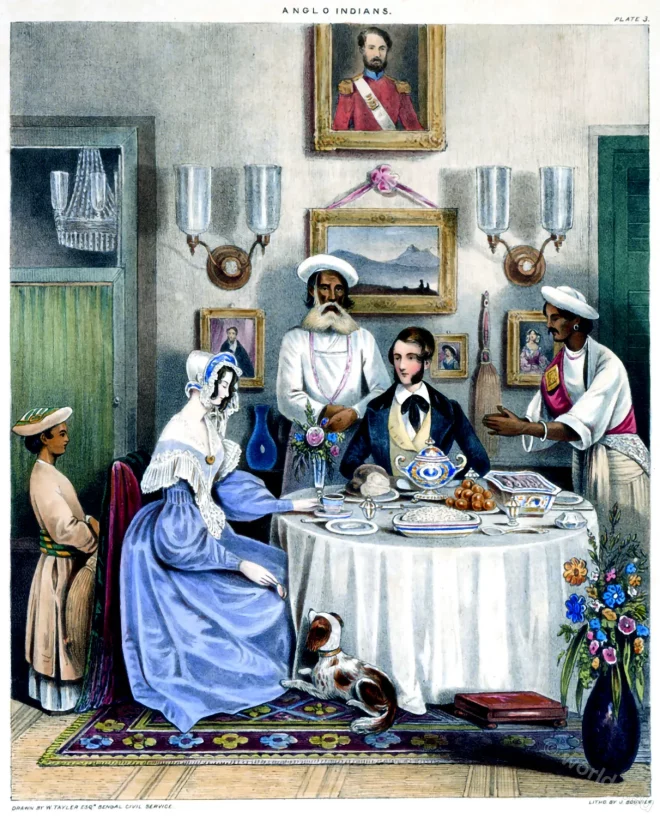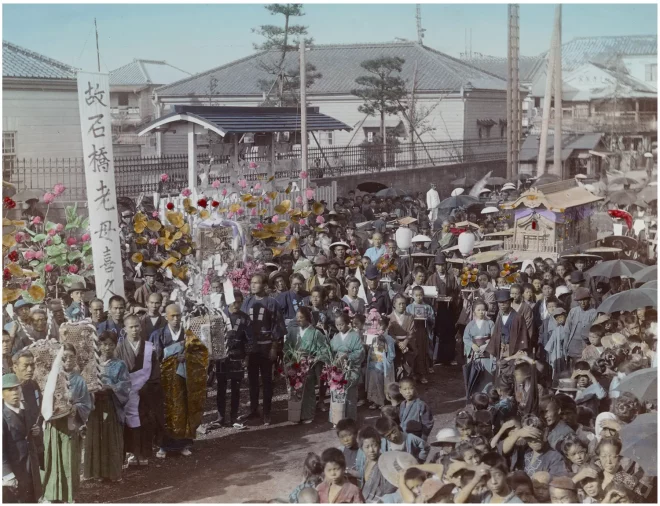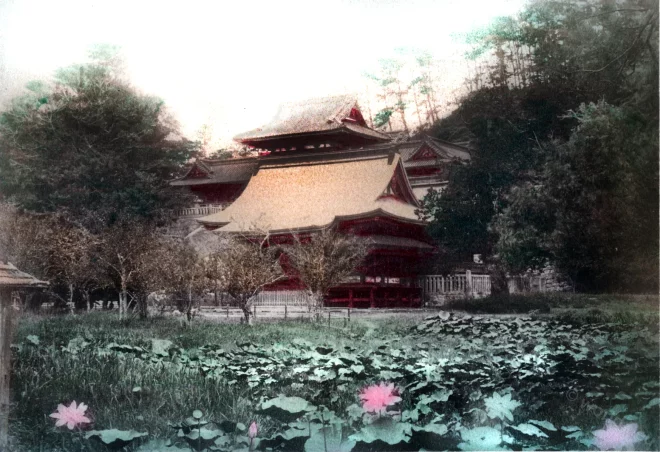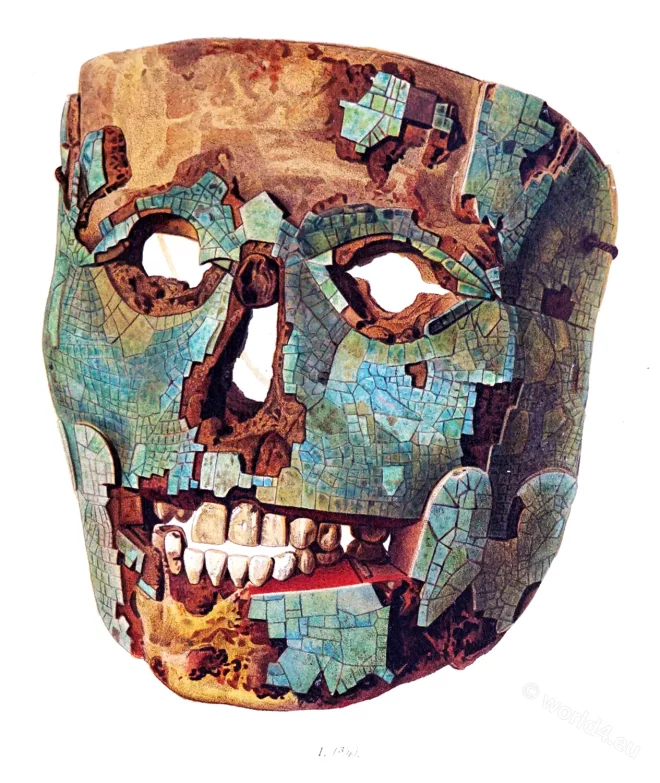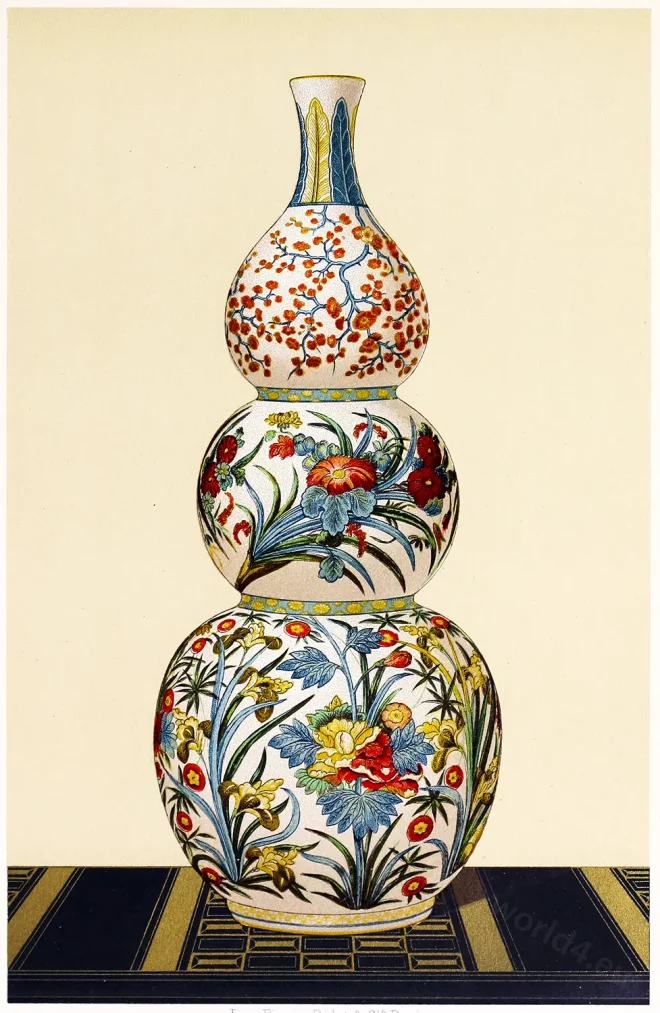A fitting representation of power, symbolical of sovereignty, mysterious and omnipotent in its influence, is Tatsu
Category: 19th Century
India. The morning breakfast in an English household.
India. The morning breakfast in the household of English colonial rulers.
Japanese dancers in posture and gestures.
The training of the dancing girl usually begins when she is about seven years of age.
Viewing the Irises at Horikiri, Japan.
The Acorus calamus, or Sweet Flag, which the Japanese call Hana-Shobu.
Ginkakuji Garden in Kyoto, Japan.
The garden of the Silver Pavilion, known as the Ginkakuji Garden, is renowned for its beauty and tranquility.
Wistaria Blossoms at Kameido, Japan.
Josiah Conder describes the beloved Wistaria as the first popular summer flower celebrated in Japanese gardens.
Japanese funeral procession.
The Japanese show great respect for the dead, and the ceremonial both at the house and grave is very impressive.
Japan. Lotus blossoms in Kamakura.
The lotus is associated with the religion of Buddha.
Skull mask covered with blue and red mosaic. Mexico.
Aztec skull mask covered with blue and red mosaic from Mexico.
Bottle of old Arita porcelain, Hizen. Imari ware, Japan.
Triple gourd-shaped bottle of Arita porcelain, Japan. In the Royal Keramic Collection, Dresden.


